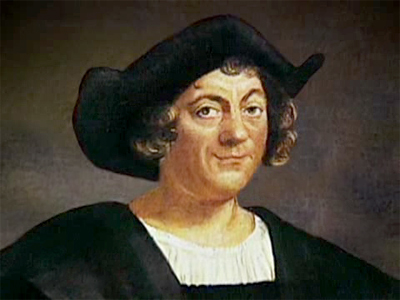In the fourth grade, my daughter asked me one day after school, “Mom, was Christopher Columbus really a bad guy?”
It’s a moment emblazoned in my mind. She’d not heard, “In 1492 Christopher Columbus sailed the ocean blue.” She didn’t know who or what the Santa Maria, Nina, and Pinta were either.
Columbus Day (October 10) was once a big deal in America.
Judgement of Columbus is best formed from historical facts based on his writings and the writings of those who lived at the time. Context of the times is also important.
Western civilization was in a free fall. The Black Death (bubonic plague) had taken up to a third of the population in some area; none were untouched. The reformation movement was underway in response to the church becoming corrupt in many ways. The Muslim world was on the attack with sites set on overtaking Europe.
The facts of Columbus’ life and the mystery surrounding how he actually got to the New World will lead most to conclude that history and the lives of those who make history are not orchestrated by humans.
Who was Christopher Columbus?
Christopher Columbus was an explorer and navigator born in 1451, in Genoa (Italy), the son of a weaver. He died in 1506. In a lifelong pursuit to discover a direct water route west from Europe to Asia, he accidentally stumbled upon the Americas.
Christopher Columbus had an insane vision in his heart that formed when he was very young. He attributed that vision to God. It propelled him through many hardships, failures, and several near death experiences. His life was not one of fame and grandeur.
He believed it was possible to reach the East by sailing west.
Columbus made his way from Genoa to Lisbon, Portugal as a boy. In those days, the Portuguese led the world in ocean exploration. Young Columbus became an apprentice to a map maker. He showed amazing aptitude.
He began seeking a sponsor to make his experimental voyage in 1484. He was scorned, called foolish and insane to cross the empty Atlantic. Seven times he presented the proposal and each time he was denied. He traveled across Europe penniless and alone.
Columbus made his last presentation in 1491 before Isabella and Ferdinand of Spain. They told him no and not to come back. They were busy fighting off the Muslim armies. Defeated, he left for France to rejoin his son.
One day into the journey, Queen Isabella’s men chased him down. She had, for some unknown reason, changed her mind.
On August 3, 1492, Columbus and his crew sailed the Nina, Pinta, and Santa Maria from the Canary Islands, 700 miles from the Iberian Peninsula.
Ironically, the Canary Islands were the only major Spanish possession in the Atlantic, and those islands were the only spot in the region that would allow the ships to catch the Northeast trade winds.
Only the Northeast trade winds could have taken Columbus to the Americas.
On October 12, 1492, Columbus and his men landed in the Caribbean. They called the island San Salvador, which means Saint Savior.
The journey was horrible, with many threats of mutiny from the men. His wits, perseverance and belief in a calling to sail the oceans in search of this route resulted in his name becoming synonymous with salvation of the Old World (Europe) by opening the New World (America, Canada, Mexico, etc.) to civilization.
From Diary of Christopher Columbus
“It was the lord who put it into my mind – I could feel his hand upon me – the fact that it would be possible to sail from here to the Indies.
All who heard of my project rejected it with laughter, ridiculing me. There is no question that the inspiration was from the Holy Sprit, because he comforted me with rays of marvelous illumination from the holy scriptures.
For the execution of the journey to the Indies, I did not make use of intelligence, mathematics or maps. It is simply the fulfillment of what Isaiah had prophesied.”
Was Christopher Columbus a bad guy, and was his discovery of the route to America bad?
Christopher Columbus made four trips across the Atlantic Ocean from Spain: in 1492, 1493, 1498 and 1502.
According to first-hand accounts, including his own diary, initial contact with the natives resulted in exchange of gifts and mutual admiration.
The Europeans and the natives were surely like aliens to each other in every way. But Columbus was not a perpetrator of any crime or disrespect to the people.
Two things eventually happened that led to death and bad blood between the natives and Spaniards that would follow in Columbus’ wake.
Disease, primarily small pox, killed many natives. Europeans unwittingly brought the disease to a people with no immunity. Conversely, the natives introduced to Europeans a new disease called Syphilis.
The Spaniards looked upon the bounty of the New World’s riches as theirs for the taking with little regard for the existing cultures. They followed in Columbus’ footsteps seeking gold and silver.
There are many great stories of how the natives fought back and won in many cases against the Spanish. If you read further into history, you’ll find that the Spanish approach to conquering failed. What succeeded was community building by way of colonization, another approach taken a years later by the British, followed by the French and Dutch.
Columbus is not a bad guy or a good guy. He played his particular role in history.
Read monthly WORTHY THOUGHTS at www.carlagharper.com. Sign Up at the Contact page here.

